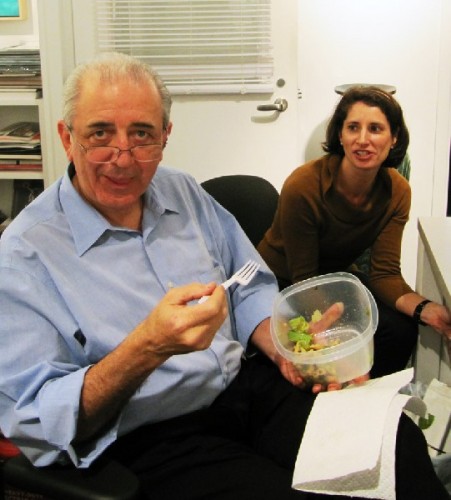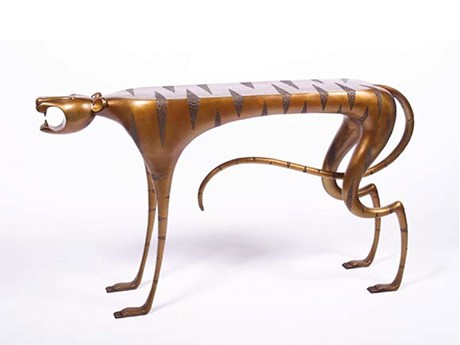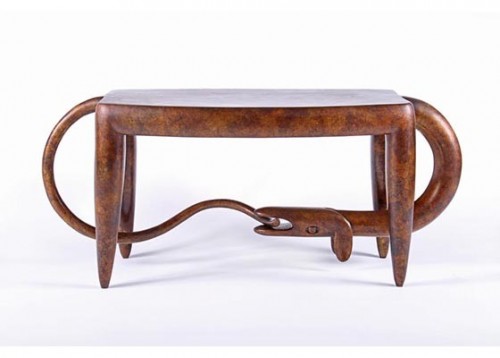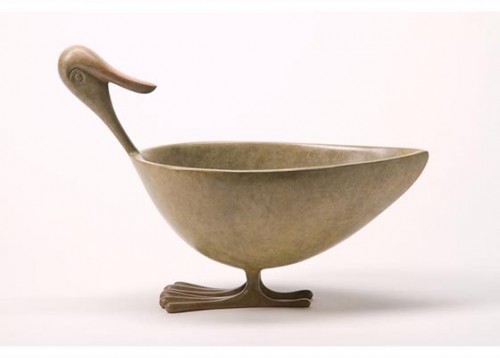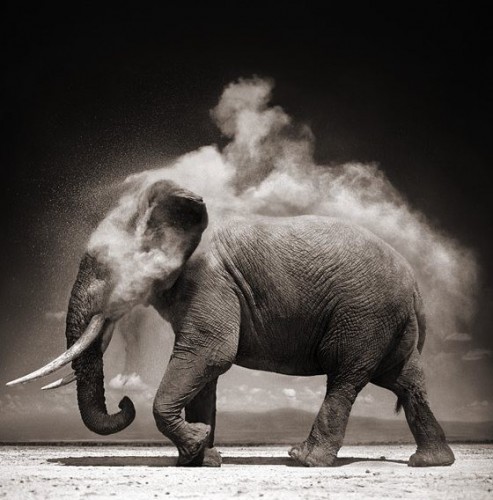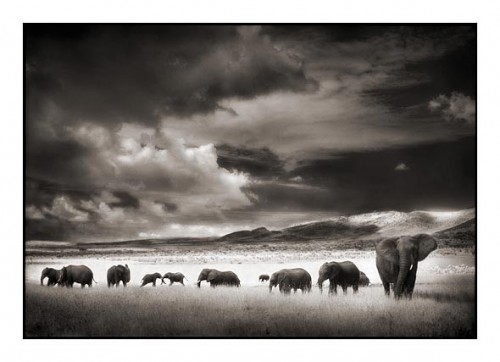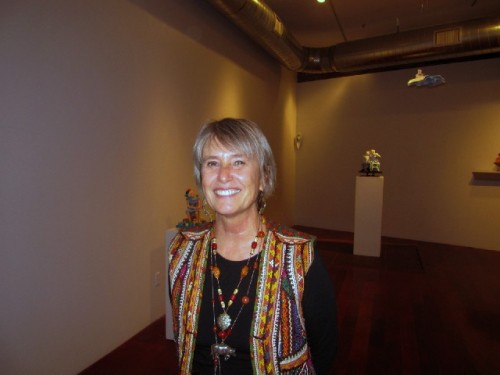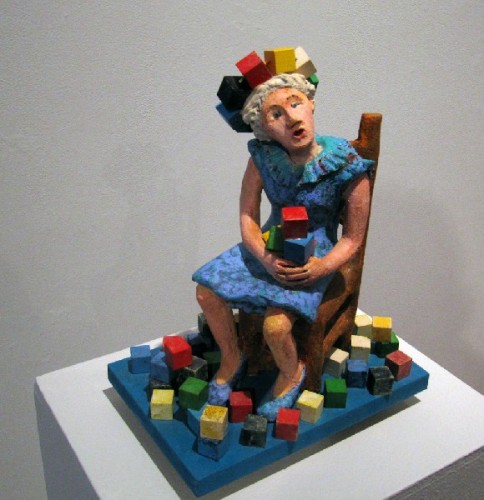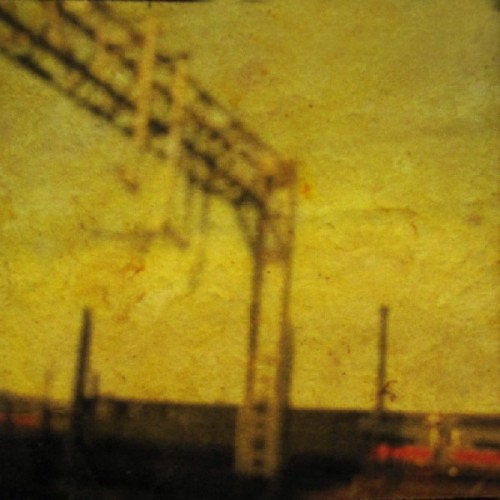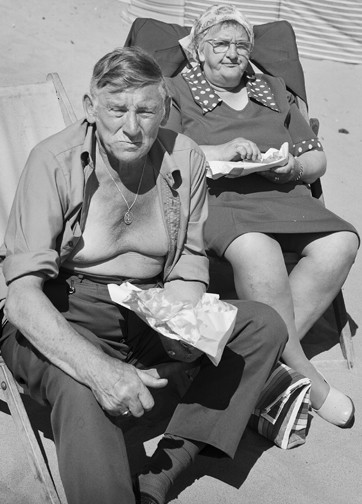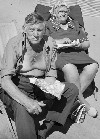Boston Galleries Overview
Newbury Street and South End
By: Charles Giuliano - Nov 26, 2010
During a recent week in Boston for the opening of the Art of the Americas wing we checked out the galleries.
It had been some time since our last visit. Although we read about changes reality was another matter. A stroll down Newbury Street, the traditional gallery row, was depressing. By contrast, the critical mass of activity in the South End was exhilarating.
With so many closings Newbury Street is a shadow of its former self. There are a lot of galleries, but mostly commercial ones, selling elaborately framed, expensive, works on paper by the usual suspects. Yawn. An interesting new addition is Iris Gallery, which started in Great Barrington, and now has added a Boston venue devoted to photography. It’s the kind of work that comes with a coffee table book.
The show that was up featured African animals by Nick Brandt. The large format, black and white prints are just gorgeous. Arguably, there is nobody out there right now who covers this genre more exquisitely. It makes you want to book a safari in Kenya. As did our friends Eric and Barbara Rudd. They took along Eric’s mom, Ricki, a great adventurer in her 90s.
Over Chinese food the other night Eric showed us a book he created on line using an Apple program. There is a template for a travel format and Eric discussed how it took just about a half hour to create the 28 page, hard bound book. Each copy sells at about $36 plus shipping. The book was gorgeous as well as personal. While Eric is an artist, with a good eye, you wondered, what is the difference between a do it yourself book, and Brandt’s large format prints and books. Part of the appeal is in the subject matter. What’s not to like about exotic animals in their natural habitat? Or, a book created by a friend that resonates with memories and intimacy.
For the past couple of months, I have been printing a portfolio of images from our two weeks in Senegal a couple of years ago. The trip was traumatic so it has taken a long time to get back to dealing with the images. The trick is to create images that are not just tourist snap shots or a spread for National Geographic. The exotic images have instant appeal. For that very reason it is challenging to dig deeper for aesthetic and narrative content. You strive to get beyond a series of post cards and gorgeous sunsets. The challenge is to tell a different and more oblique story.
That is a challenge of contemporary art. So much of what we see is easy on the eye. As Duchamp put it “Too retinal.” There is a lot of easy art in the galleries. The visual experience is too often over before it starts. You want work that makes us think and struggle beyond the initial experience. On the other hand, we see far too much contemporary work, like most that fills Mass MoCA and endless art fairs and biennials, that is overblown and disconnected from our struggles and life experiences.
Today, there is a glut of art that is precious, pretentious, nurtured by too many years of graduate school and theory. Too often viewing contemporary art is tedious and enervating. We emerge from a day of trudging around Chelsea with little or nothing to show for the experience. Of course, there are also those Aha moments that make it all worth while. In a typical day of New York gallery hopping we anticipate, at best, a dozen absorbing exhibitions and a handful that are truly significant and memorable. By percentage about 10% of the shows are worth the effort. It is that increment that keeps us coming back.
Arguably, I am due for a return to Madrid and “Las Meninas” with several hours of just standing transfixed before “Garden of Earthy Delights” by Bosch. Or straining my neck gazing on the ceiling of the Sistine Chapel. We have yet to come face to face with the Parthenon or the Pyramids. That seems more enticing than another visit to documenta. We hope to visit Dublin this spring and see the Book of Kells once again. I spent about a minute looking at it, years ago, during Irish Art at the MFA. You just got nudged along in the sausage line by the flow of visitors crawling by the great Celtic masterpieces. Will it be any different at Trinity College?
Dropping in on Gallery Naga on Newbury Street got our juices flowing. Arthur Dion and Meg White were having lunch. The sign on the door said “Closed for Installation.” That never stops me. The show of studio furniture and sculptures by Judy McKie was about to open. She is their most successful artist and sells out a show every two years. Mark Favermann, who has followed her work for decades, has posted a rave review. I have known Judy’s husband, Todd McKie, from Smarty Ducky days with Marty Mull in the late ‘60s. They famously shook up the MFA with their “Flush with the Walls” conceptual/ performance piece in 1971.
Now it seems that Naga is among the too few survivors of notable galleries on Newbury Street. The handful of others include Barbara Krakow, Miller Block and Robert Klein. In the past year Rotenberg and Nina Nielsen galleries closes. Howard Yeserski moved off the street awhile back. We dutifully made the rounds but critical mass and energy is just not there. The decorator galleries are not worth visiting.
By contrast, our visit to the cluster of galleries off Harrison Avenue in the South End was exhilarating. Walking down Thayer Street we were encouraged to see that the long loft buildings on both side are now fully built out and occupied. The number of galleries and commercial ventures have doubled since our last visit.
It was a Saturday afternoon and the traffic, even for a weekend, was light. Finding a place to park we started with Boston Sculptors which was having an opening. We talked with the figurative sculptor Sally S. Fine. She recognized me and initiated a conversation. After our round of galleries we stopped back later in the afternoon. There wasn’t much of a crowd for an opening. Fine explained that most people turn out for the crowded First Friday events. Boston Sculptors moved to the South End from a Newton Church a few years ago. They have a great space and we always enjoy seeing new work by members of the cooperative gallery.
There are a couple of other long established coops in the South End, Kingston and Bromfield. Responses to their shows are generally mixed. Over the years, we have seen a lot of good work. This was not one of those occasions. The work was credible but not very absorbing. Astrid responded to the Kingston installation of stack, scattered, grisaille pillows by Karen Mennino more than I did. The trippy, collagey, radical ‘60s based images by Betsyann Duval at Bromfield were annoyingly badly painted.
We dropped in on Samson Projects to see Camillo Alvarez who was out of town as usual. I didn’t understand the work but then I never do. The gallery is widely respected for its cutting edge program. It’s generally edgy work that doesn’t float my boat. Camillo is fiercely smart, ambitious, and hip. Of the Boston dealers, through the art fairs, he has an established national reputation. With too few serious collectors of contemporary art in Boston most of his sales occur on the road.
I enjoyed talking with old friends, in ever sense, Howard Yeserski and Arlette Kayafas. Usually, in addition to talking about art, we compare the newest symptoms. It seems that Howard is just one year younger than me, to the day. Our lively dialogue goes back decades.
His move from Newbury Street, a couple of years, ago transferred all that history, knowledge, wit, and gravitas to the South End. I recall talking him, when the economy was tanking, about signing another lease. He has a great space. He describes it as twice as big at half the cost of rent on Newbury Street. Compared to a former space on an upper floor, he now has street level access, and displays sculpture in the window. With the critical mass of galleries as neighbors Yezerski states that there has been no significant decline of foot traffic and collectors.
The current exhibition of grungy, depressing, vintage, black and white photographs by Chris Killip demonstrated his sharp eye. Yezerski respected as a leader of the Boston arts community. The British photographer captured subject matter that conjures Walker Evans and the FSA photographers of the Depression era.
Making a crack I said to Howard “Looking at these images it’s hard to imagine how the Brits ever ruled an Empire.” I would love to own a print by Killip but they go for four large. Which is a lot for bangers and mashed, or darts at a pub. The work is drawing interest from major collectors and museums.
Although business is challenging Kayafas prevails primarily through a real passion for photography. She and her husband Gus are major collectors who have given many vintage prints to the DeCordova. They work closely with the MFA particularly promoting young artists.
For seniors like Howard and Arlette running galleries is about commitment to a way of life. It’s about getting work they believe in seen and experienced by viewers.
The panoramas at Kayafas, assembled in sections by Robert Richfield, were stunning and fascinating. The show ends this weekend. But you can check out the work on line. The gallery was selling a large, spiral bound book.
In January, Kayafas will show work by my buddy, jazz photographer, Herb Snitzer. He has a new book and we are talking about how best to cover his show. We met years ago shooting a Woody Herman Band performance at Sandy’s in Beverly.
Our last stop was Carroll and Sons. We have never met the son. There was an intriguing, museum level, video installation, on four walls, by Michael Buhler-Rose. To a raga background the artist is positioned behind a plexi wall on which saffron color is applied and then washed off. When a cycle is completed the video freezes and our attention is diverted to the next wall.
The space is a portion of what was formerly the Bernard Toale Gallery. James Carroll formerly worked with Toale and continues to represent a number of the artists. It was interesting when Carroll told us how Buhler-Rose had emerged out of the former drawing project. It started a relationship which has sustained and developed over time.
Our North Adams, Eclipse Mill neighbor, Mary Lum, will show at Carroll and Sons in April. We talked with her about that upcoming exhibition. She responded that she hasn’t even started the work as she is focusing on an exhibition in Atlanta in March. Seems that she is super busy.
Visiting the Boston galleries left us with as many questions as answers. Now with the new MFA and its spectacular Art of the Americas, as well as the new ICA building on the waterfront, you wonder what impact that will have on the community of contemporary artists. Boston/ Cambridge has an enormous critical mass of colleges, universities, art schools, museums and academic galleries. It is a great community to live and work in. But there continues to be a real struggle to connect to a base of committed collectors. Those few who are interested in collecting have ready access to New York or make the rounds of art fairs.
That has always been the dilemma for Boston artists and their dealers. You wonder, however, if the staggering museum level activity, Harvard is under renovation as well, will have an impact in changing the profile of the arts community. Watch this space.

